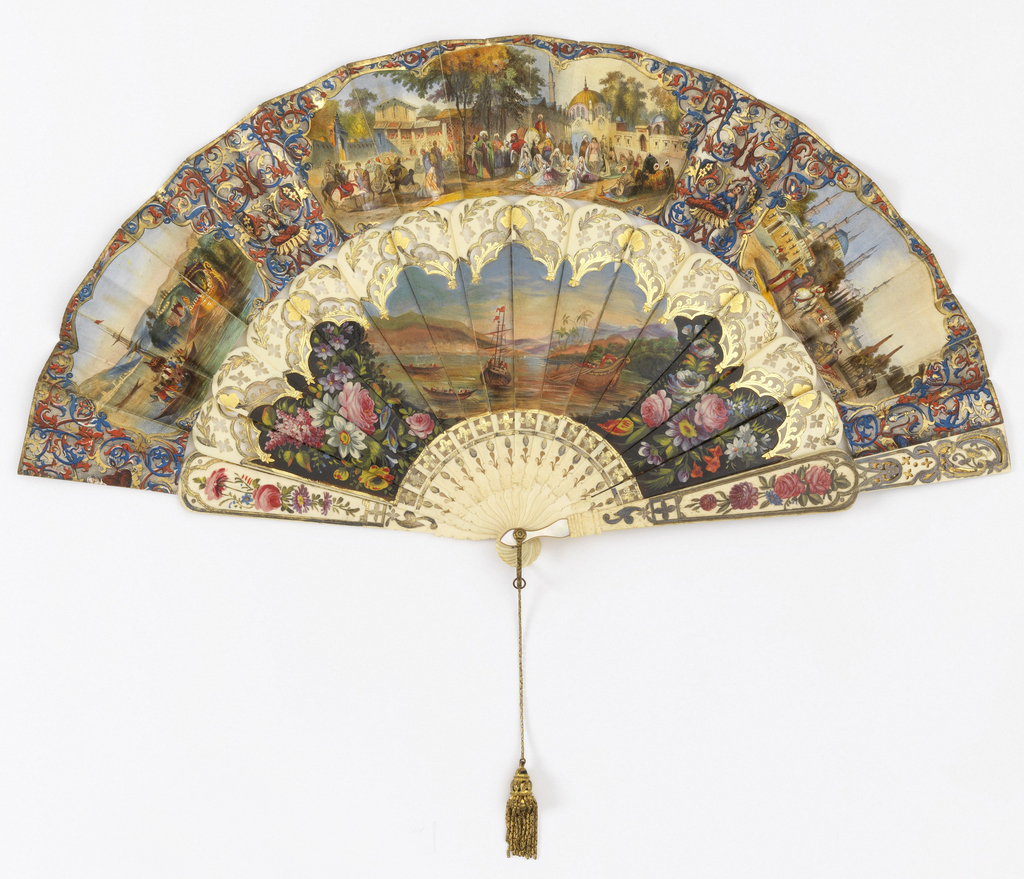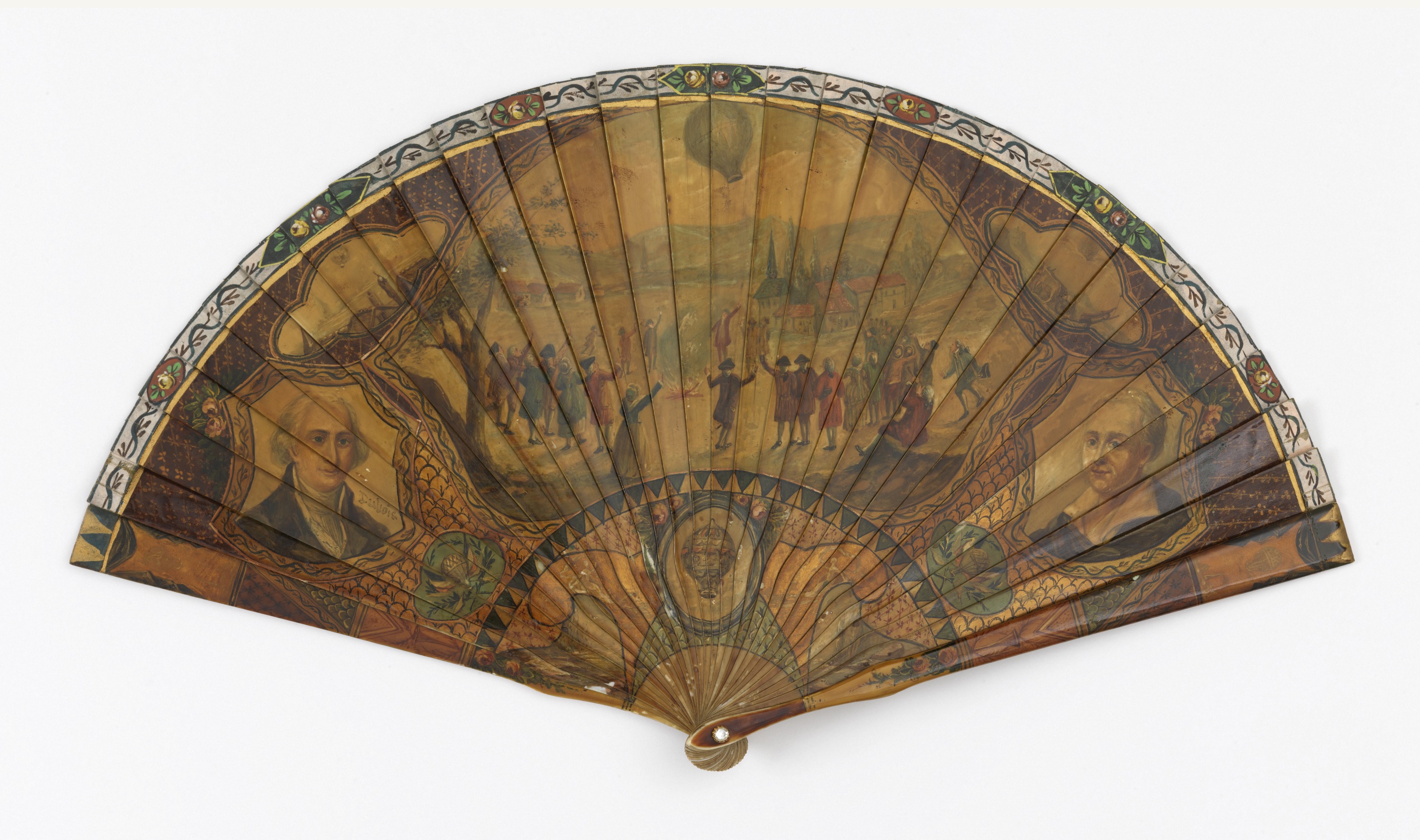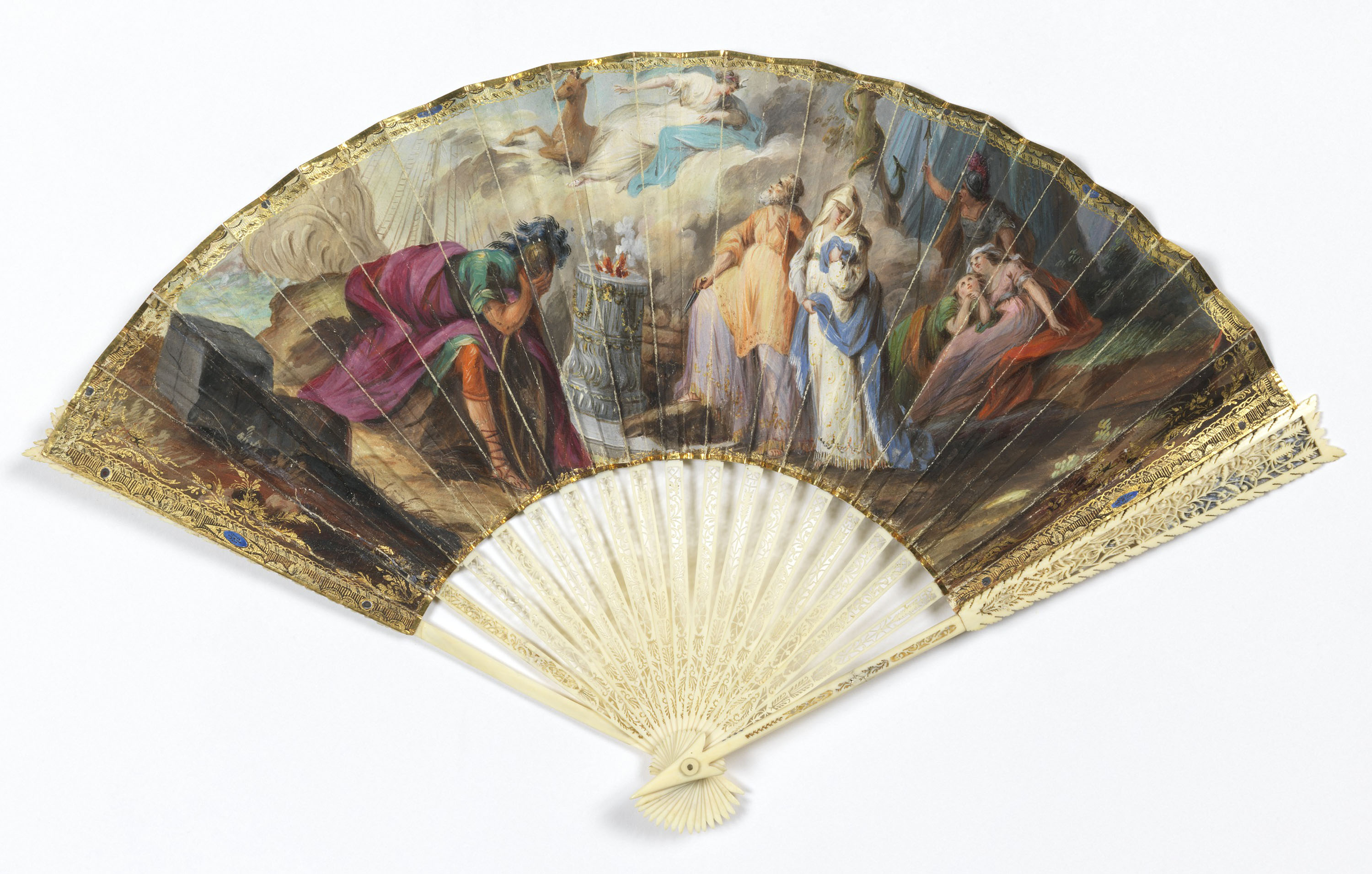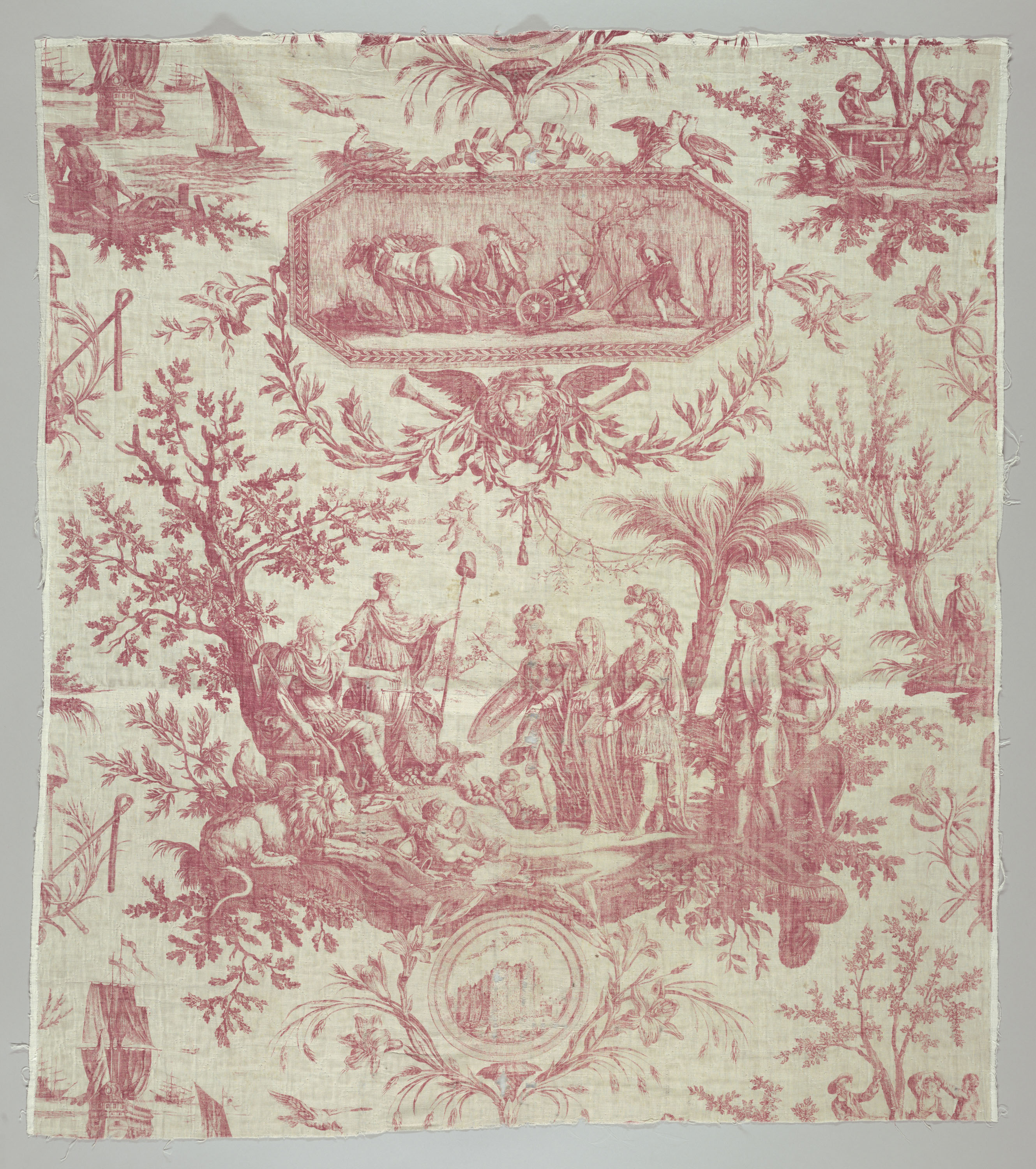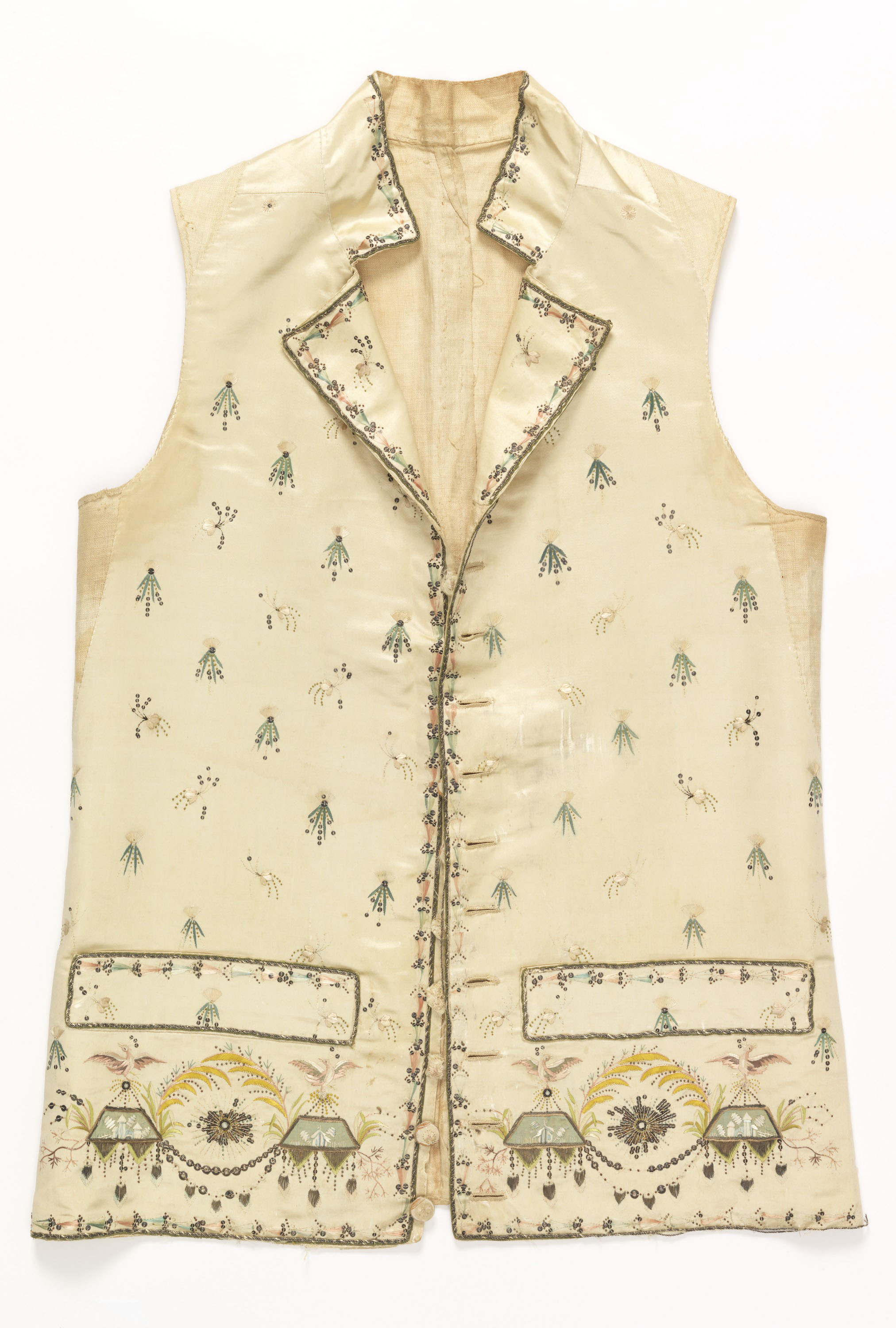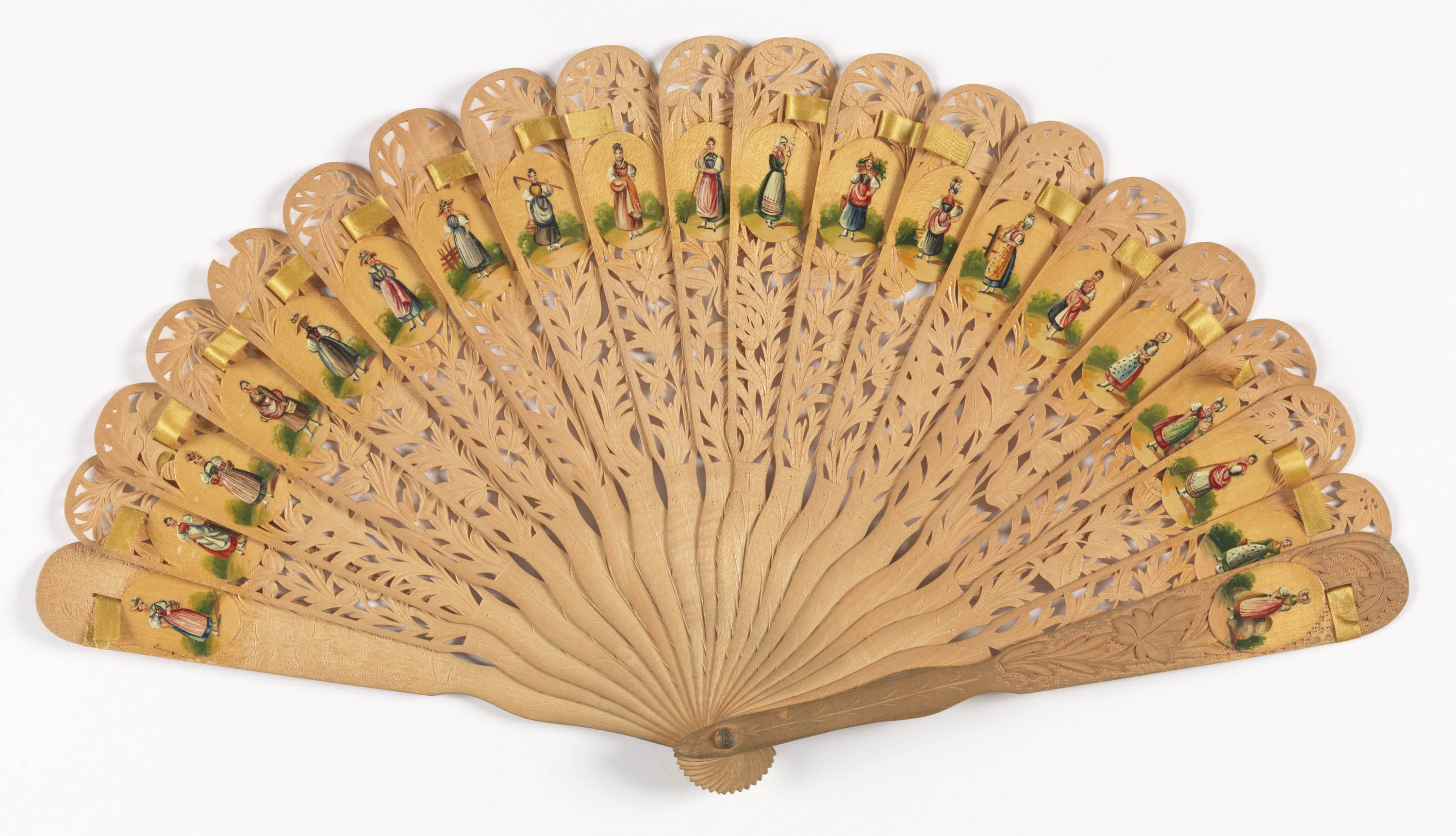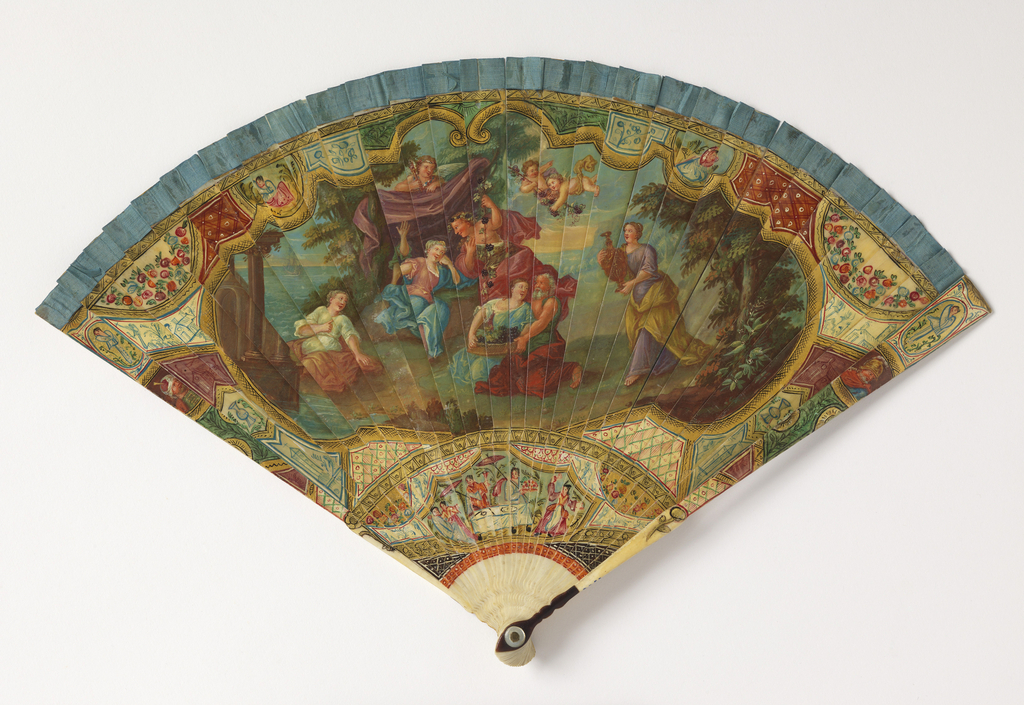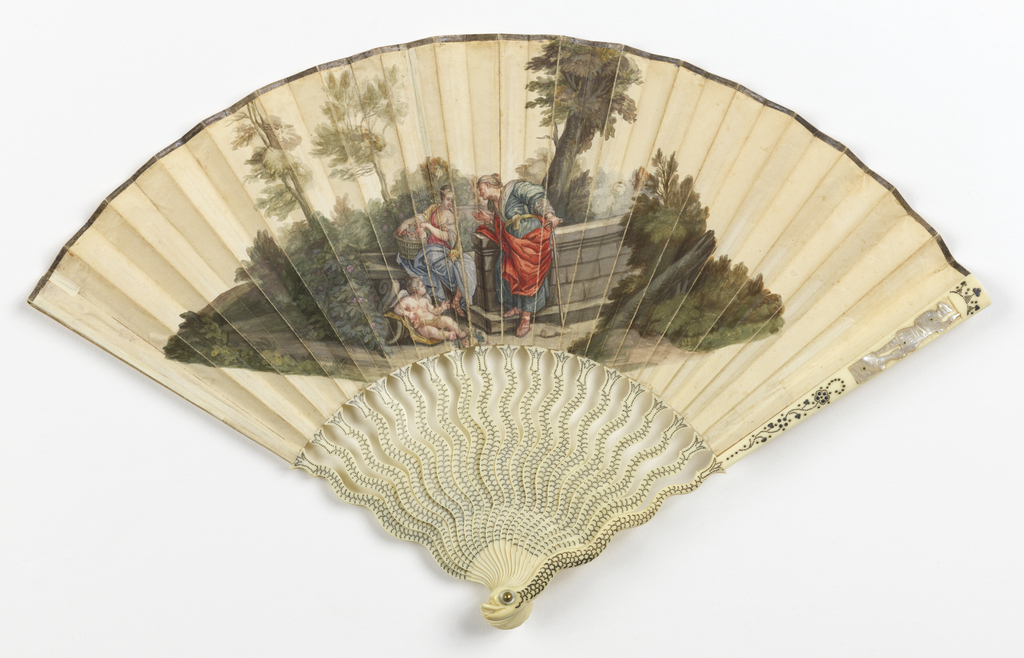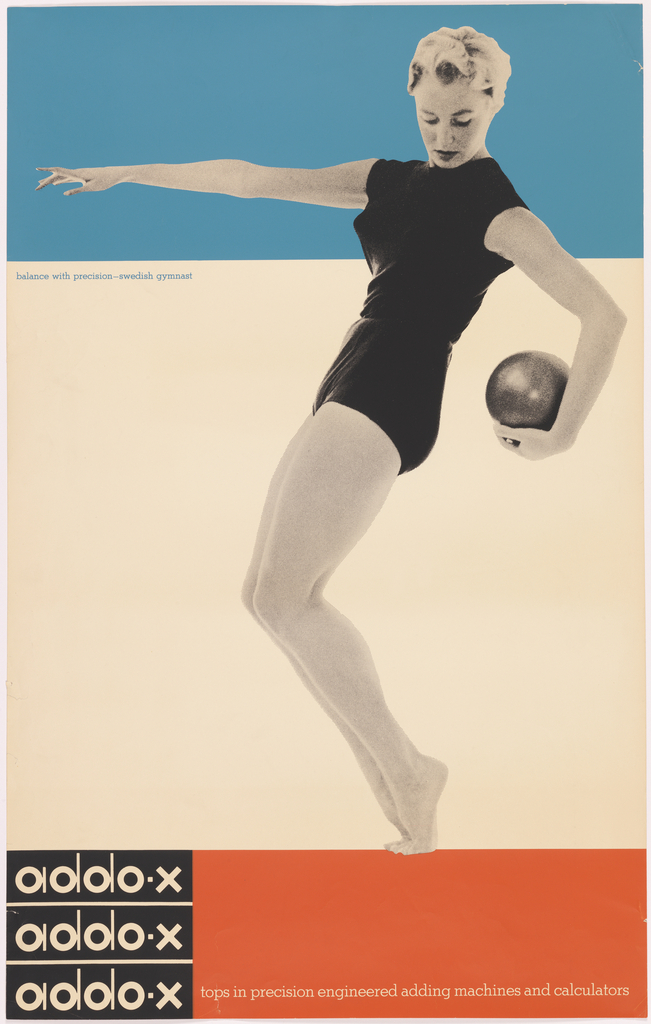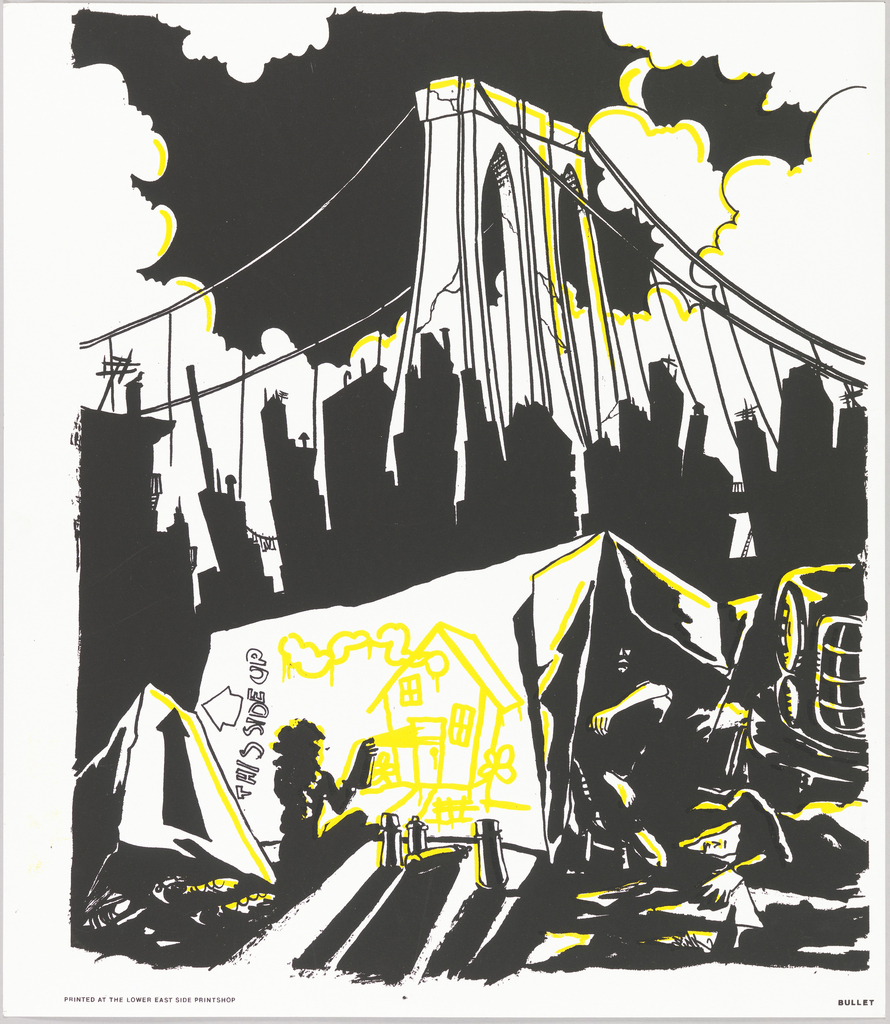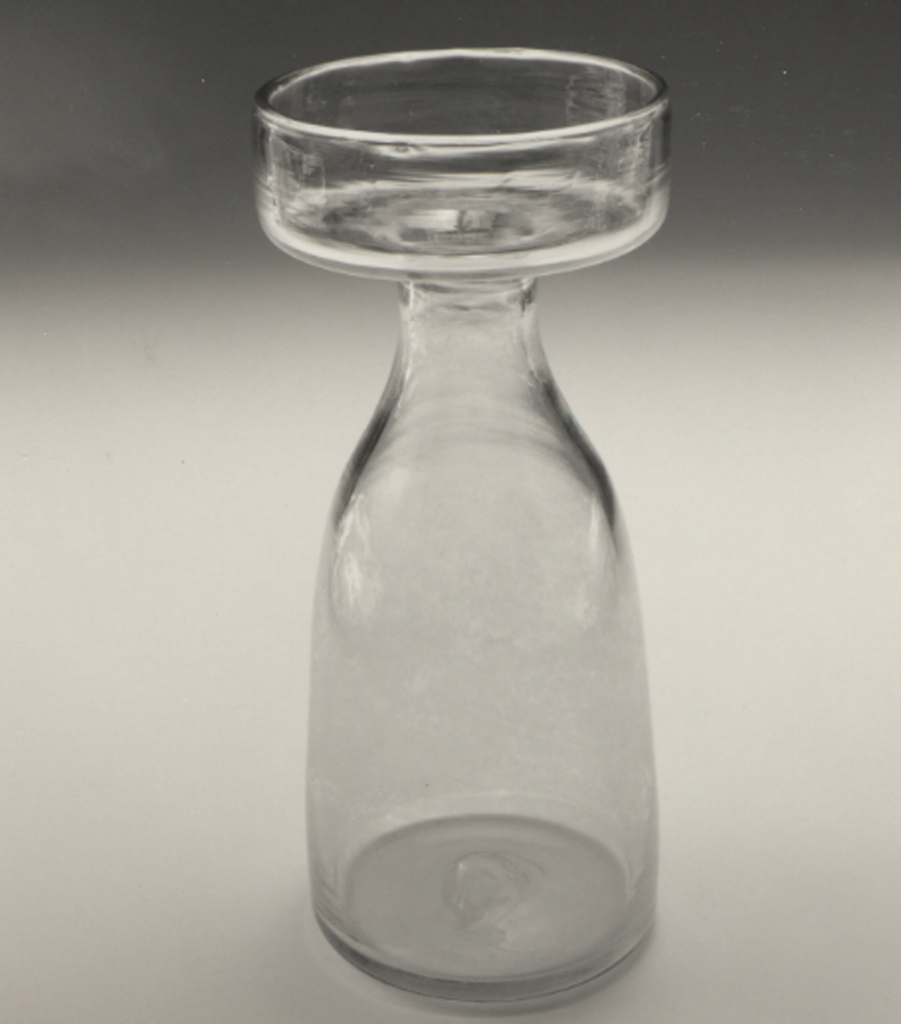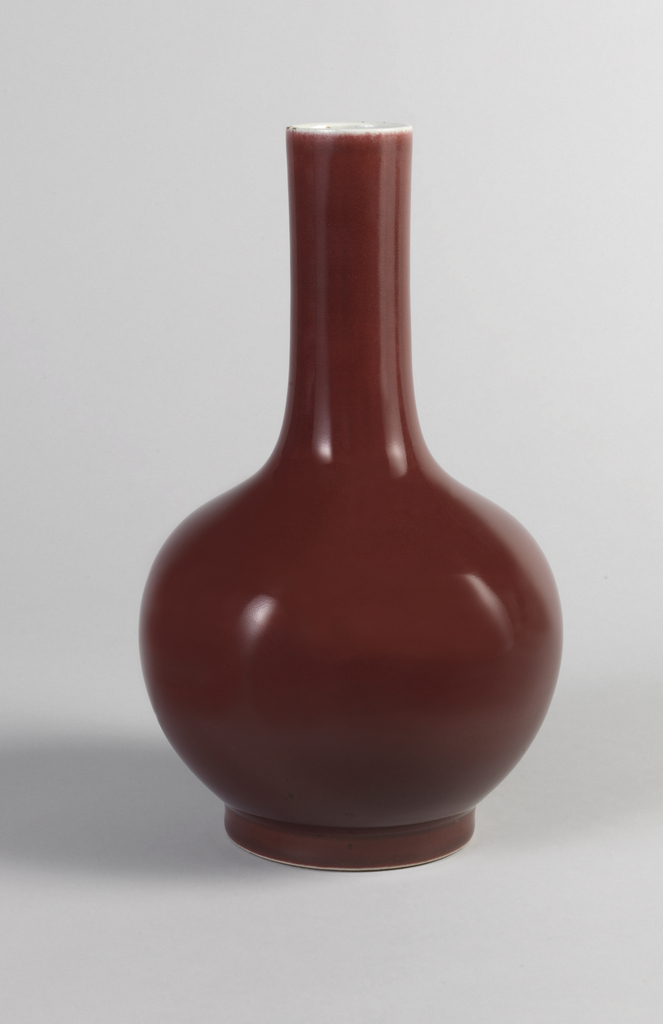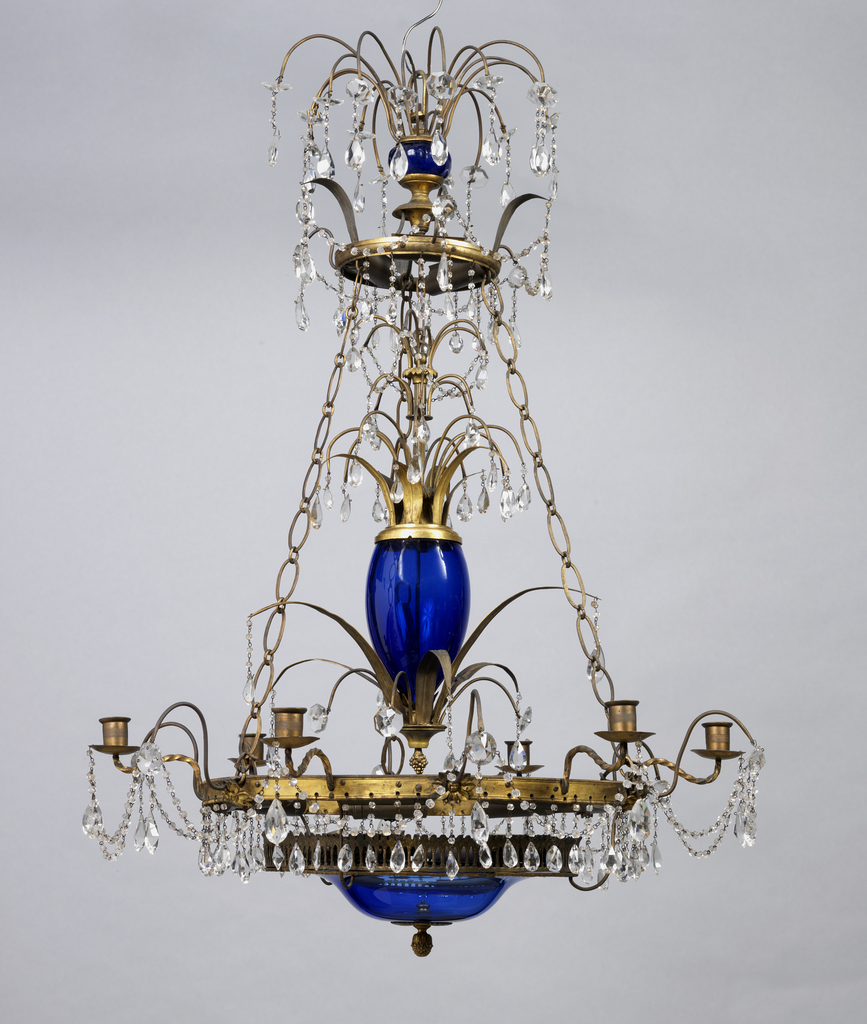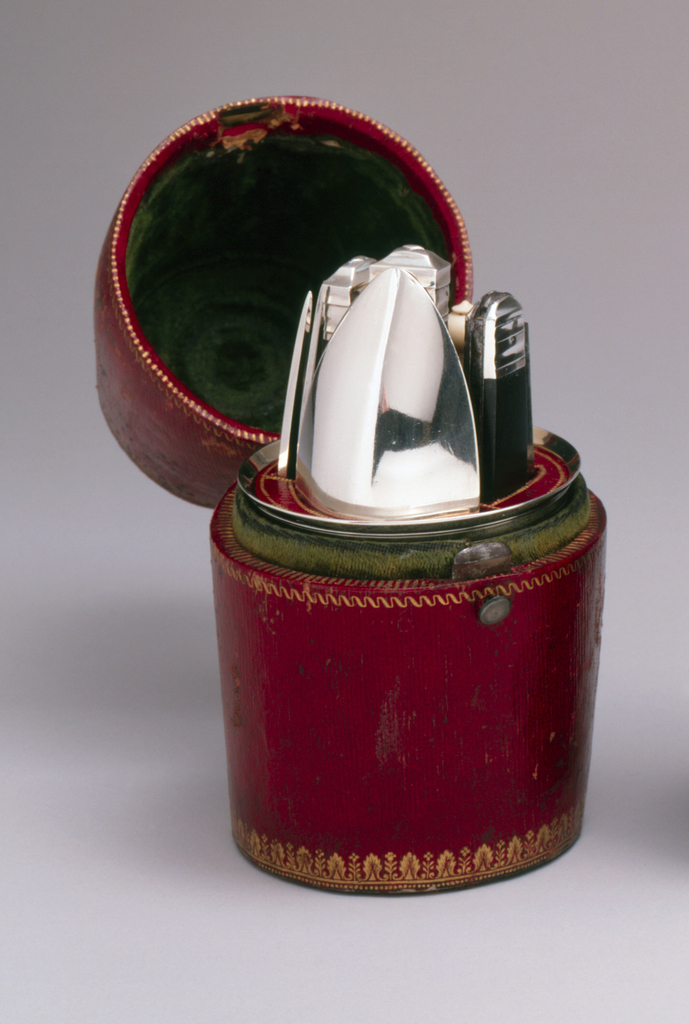This fan’s printed scenes of the Ottoman Empire are after the English architect and landscape painter Thomas Allom (1804-1872), whose drawings were engraved and published in the 1840 book, Constantinople and the Scenery of the Seven Churches of Asia Minor. [1] The center image is of the Arut Bazaar, a female slave market in Constantinople....
This fan commemorates the Montgolfier brothers Joseph-Michel Montgolfier (left, 1740-1810) and Jacques-Étienne Montgolfier (right, 1745-1799), inventors the globe aérostatique (hot air balloon). The central scene shows the brothers’ first public experiment, which took place in Annonay, France on June 4th, 1783 in front of a group of state representatives. That day, a balloon inflated with...
The subject of this fan is an episode from the Ancient Greek myth of the Trojan War. Agamemnon has vowed to sacrifice his daughter Iphigenia to appease Artemis, whose wrath he incurred by killing deer in a sacred grove. This fan illustrates the dramatic moment when the goddess takes pity on the girl and at...
It is with the perfect vision of hindsight that we can perceive the dramatic irony embedded in this textile, printed at the heart of the French Revolution. The intended message is announced on a banderole held aloft by a putto: Louis XVI is the Restorer of Liberty, a title briefly bestowed on him by the...
The light color palette and spare decoration of this waistcoat are typical of the neoclassical style, which dominated design in the late eighteenth century and early nineteenth century. The silhouette is tight-fitting and markedly angular, with the lower hem cut straight across and rectangular pocket plackets. This was a departure from the skirted waistcoats with...
During the nineteenth century, many European nations endeavored to define their cultural identities and to establish national histories. This romantic nationalism was characterized by a nostalgia that fueled an interest in historic folk customs. Peasants were commonly viewed as synonymous with nationhood and peasant costumes were the subject of interest and national pride. This fan,...
This brisé fan (one consisting of rigid sticks joined with a ribbon) illustrates a story from ancient Greek mythology. Dionysus, the god of wine, finds Ariadne on the Island of Naxos. Ariadne, the daughter of King Minos of Crete, has fled away with Theseus, slayer of the Minotaur, and been deserted by him on the...
This fan depicts a scene from Roman mythology in which Vertumnus, god of orchards, seduces the nymph Pomona, steward of fruit trees, by assuming the guise of an old woman. The story is best known from Ovid’s Metamorphoses, a collection of myths centered around the recurring themes of love and transformation. Such tales were apt...
We see posters not only with our eyes but with our bodies. In this sense, we respond physically to the taut pose of the elegant athlete in Ladislav Sutnar’s 1958 poster for Addo-X. Sutnar created a bold new logotype for the Swedish office machine brand in 1956; he also designed numerous posters and advertisements for...
During the 1980s, there was a severe housing crisis in New York City. The building of residential properties had declined during the economic depression of the preceding decade and the limited supply of affordable housing caused a sharp increase in homelessness. In neighbourhoods like the Lower East Side, absentee landlords permitted old buildings to fall...
This distinctly shaped glass vessel, with its thin tapering neck and wide body, was specially designed for growing flowering plants in their off-season, a process known as ‘forcing bulbs’. It is often called a hyacinth vase, after the fragrant flower commonly grown indoors. One would fill the vase with enough water that the bulb, when...
This oval tray represents the unique collaborative effort between Alexandre Brongniart, the director of Sèvres appointed in 1800, and his father, the designer Alexandre-Théodore Brongniart. The younger Brongniart’s passion for the natural world is reflected by the scientific precision of the biological species represented in finely painted enamel. Small roundels of exotic birds and butterflies...
The deep red glaze on this porcelain vase is derived from copper, a metal which is notoriously difficult to control under the heat of a kiln. The distinct oxblood color is created when copper is starved of its oxygen during the firing (in a smoky, oxygen reduced kiln) and re-oxidized in the cooling. The resulting...
This three tiered chandelier in the form of a cascading fountain is garlanded with swags of cut glass drops. Three delicately blown baluster-shaped pieces of cobalt glass are linked by chains of gilt metal. The reserved neoclassical form and use of blue glass strongly indicate that the chandelier was made during the last quarter of the eighteenth century in...
Sumptuously crafted by the Paris silversmith Gavet, this cutlery set was a luxury object intended for stylish travelers in the early nineteenth century. Cleverly designed with nesting parts, the set includes everything an affluent city dweller could need to dine outdoors, including a fork and spoon with detachable ebony handles inlaid with silver, a folding steel...
